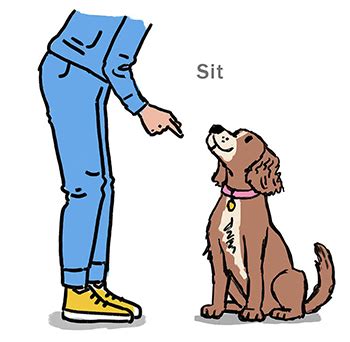
A loyal dog in Michigan is being hailed a hero after it stayed by the side of a lost fawn, protecting it until its mother returned.
A heartwarming tale of canine compassion unfolded in a Michigan backyard when a family dog, a golden retriever mix named Mack, refused to leave the side of a baby fawn that had seemingly lost its way. Mack’s unwavering loyalty and protective instincts shone through as he sat vigil over the vulnerable creature, ensuring its safety until its mother eventually reappeared. The incident, captured in endearing photographs and videos, quickly went viral, captivating hearts and reminding people of the unique bond between humans and animals, as well as the incredible capacity for empathy that exists within the animal kingdom. The story serves as a powerful reminder of the innate goodness that can be found in unexpected places and the profound connections that bind all living beings together.
Andrea Smith, Mack’s owner, discovered the unusual pairing in her backyard. Initially, she was concerned when she noticed Mack fixated on something near the edge of their property. Upon closer inspection, she realized that Mack was not exhibiting his usual playful behavior but instead displaying a calm, protective demeanor toward a small, seemingly abandoned fawn. Smith recounted her surprise, stating, “He wasn’t barking or trying to play. He was just sitting there, very still, watching over it.”
Smith decided to observe the situation from a distance, hoping the fawn’s mother would return. Hours passed, and Mack remained steadfast, never leaving the fawn’s side. He shielded it from the sun, kept a watchful eye on their surroundings, and even seemed to offer comfort to the frightened animal. Smith noted that Mack’s behavior was completely out of character. Typically energetic and playful, he demonstrated remarkable restraint and gentleness in the presence of the fawn.
As dusk approached, Smith began to worry about the fawn’s well-being. She contacted local wildlife authorities, who advised her to continue monitoring the situation and to avoid intervening unless the fawn appeared to be in distress. They explained that deer often leave their fawns alone for extended periods while they forage for food and that intervening prematurely could disrupt the natural bonding process.
Throughout the night, Mack remained on guard. Smith periodically checked on them, providing Mack with food and water, which he consumed sparingly, seemingly unwilling to leave his post. The following morning, as the sun rose, the fawn’s mother finally appeared. Smith watched as the deer cautiously approached her baby, nudging it gently before leading it back into the woods. Mack, his duty fulfilled, watched them disappear into the foliage before returning to the house, seemingly content with his role in the reunion.
The story of Mack’s loyalty quickly spread through social media, with users praising his compassion and protective instincts. Many commented on the remarkable bond between different species and the capacity for animals to display empathy and kindness. Smith expressed her pride in Mack, stating, “He’s always been a good dog, but this just shows how much love and compassion he has in his heart.”
The incident has also sparked discussions about wildlife conservation and the importance of respecting the natural habitats of animals. Experts emphasize the need to avoid disturbing wildlife, especially during sensitive times such as mating and birthing seasons. They also advise against approaching or attempting to rescue seemingly abandoned animals, as human intervention can often do more harm than good.
Mack’s story serves as a heartwarming reminder of the power of compassion and the unique connections that can exist between different species. It highlights the importance of respecting wildlife and allowing nature to take its course, while also celebrating the remarkable capacity for empathy that exists within the animal kingdom. It is a testament to the unwavering loyalty of dogs and their ability to form deep bonds with both humans and other creatures.
Further Details and Context:
The story of Mack and the fawn is not just a feel-good narrative; it also provides an opportunity to delve deeper into the behavior of dogs, the habits of deer, and the broader implications for wildlife conservation. Understanding the science behind these behaviors can provide a richer appreciation for the events that unfolded in that Michigan backyard.
Understanding Canine Behavior:
Dogs have been domesticated for thousands of years, evolving alongside humans and developing a unique understanding of our social cues and emotions. This long history of co-evolution has also shaped their behavior, making them capable of forming strong bonds with other species, including humans and, as demonstrated by Mack, even wild animals.
- Protective Instincts: Dogs possess strong protective instincts, which are rooted in their pack animal heritage. In the wild, dogs would work together to protect their territory and their young. Even domesticated dogs retain these instincts, often extending their protective behavior to their human families and, in some cases, other vulnerable creatures.
- Empathy and Compassion: While it is difficult to definitively prove that dogs experience emotions in the same way as humans, there is growing evidence that they are capable of empathy and compassion. Studies have shown that dogs can recognize and respond to human emotions, such as sadness and fear. They may also be able to sense when another animal is in distress and offer comfort or assistance.
- Breed-Specific Traits: While all dogs share certain common traits, different breeds have been selectively bred for specific purposes, resulting in variations in their behavior and temperament. Golden Retrievers, for example, are known for their gentle and friendly nature, making them particularly well-suited to interacting with children and other animals. Mack’s breed mix likely contributed to his calm and protective demeanor toward the fawn.
- The Role of Scent: Dogs have an incredibly keen sense of smell, which plays a crucial role in their behavior. They use scent to identify other animals, track their movements, and even detect changes in their emotional state. Mack’s ability to detect the fawn’s presence and assess its vulnerability likely influenced his decision to stay by its side.
Deer Behavior and Fawn Care:
Deer are common inhabitants of North American forests and fields, and their behavior is often misunderstood by humans. Understanding their habits, particularly their approach to fawn care, is essential for avoiding unnecessary intervention and ensuring the well-being of these animals.
- Fawn Development: Fawns are born in the spring and early summer, typically weighing between 4 and 8 pounds. They are born with a spotted coat, which provides camouflage in the dappled sunlight of the forest. Fawns are relatively helpless at birth and rely entirely on their mothers for care and protection.
- Maternal Care: Deer mothers, known as does, are highly attentive to their fawns, providing them with milk, grooming, and protection from predators. However, does also leave their fawns alone for extended periods while they forage for food. This behavior is a natural adaptation that helps to protect the fawn from being discovered by predators.
- Hiding Behavior: When a doe leaves her fawn, she will typically hide it in a secluded spot, such as a thicket of bushes or a patch of tall grass. The fawn will remain motionless, relying on its camouflage to avoid detection. Does will return to their fawns several times a day to nurse them and check on their well-being.
- The Importance of Non-Intervention: It is crucial to avoid approaching or attempting to rescue seemingly abandoned fawns. In most cases, the fawn’s mother is nearby and will return to care for it. Human intervention can disrupt the natural bonding process and may even lead to the fawn being rejected by its mother. Wildlife experts advise observing fawns from a distance and only intervening if they appear to be injured or in immediate danger.
Wildlife Conservation and Human Impact:
The story of Mack and the fawn also highlights the importance of wildlife conservation and the impact that humans can have on animal populations. As human development continues to encroach on natural habitats, it is becoming increasingly important to protect and preserve the wild spaces where animals can thrive.
- Habitat Loss: Habitat loss is one of the biggest threats to wildlife populations around the world. As forests and fields are converted into farmland, urban areas, and industrial sites, animals lose their homes and their sources of food and water. This can lead to population declines, increased competition for resources, and even extinction.
- Human-Wildlife Conflict: As humans and animals increasingly share the same spaces, conflicts can arise. Deer, for example, may be attracted to gardens and crops, causing damage and frustration for homeowners and farmers. It is important to find ways to coexist peacefully with wildlife, such as using fencing to protect gardens and crops, and avoiding feeding wild animals.
- The Importance of Education: Education is crucial for promoting wildlife conservation. By learning about the habits and needs of different animals, people can develop a greater appreciation for the natural world and be more likely to support conservation efforts. Education can also help to prevent human-wildlife conflicts by teaching people how to interact with animals safely and responsibly.
- Supporting Conservation Organizations: There are many organizations dedicated to protecting wildlife and their habitats. By donating time or money to these organizations, people can make a tangible difference in the lives of animals and help to ensure that future generations will be able to enjoy the wonders of the natural world.
The Emotional Impact of the Story:
Beyond the scientific and conservation aspects, the story of Mack and the fawn resonates deeply with people on an emotional level. It is a reminder of the inherent goodness that exists in the world and the capacity for kindness and compassion that transcends species boundaries.
- The Power of Unconditional Love: Dogs are often praised for their unconditional love and loyalty. Mack’s unwavering devotion to the fawn is a testament to this quality and serves as a powerful reminder of the importance of love and compassion in our own lives.
- Hope and Inspiration: In a world often filled with negativity and conflict, the story of Mack and the fawn offers a glimmer of hope and inspiration. It demonstrates that even in the face of adversity, acts of kindness and compassion are possible.
- A Connection to Nature: The story also reminds us of our connection to the natural world. By witnessing the bond between Mack and the fawn, we are reminded of the interconnectedness of all living things and the importance of protecting and preserving the environment.
- A Call to Action: Ultimately, the story of Mack and the fawn can serve as a call to action. It encourages us to be more mindful of our impact on the environment, to treat all living creatures with respect and compassion, and to strive to make the world a better place for all.
Conclusion:
The heartwarming tale of Mack, the loyal dog, and the lost fawn is more than just a viral sensation. It is a multifaceted story that touches on themes of canine behavior, deer ecology, wildlife conservation, and the power of compassion. By understanding the science behind these themes, we can gain a deeper appreciation for the events that unfolded in that Michigan backyard and be inspired to take action to protect and preserve the natural world. Mack’s unwavering loyalty serves as a powerful reminder of the unique bonds that can exist between different species and the importance of treating all living creatures with kindness and respect. It’s a story that resonates with people of all ages and backgrounds, reminding us of the simple joys and profound connections that make life worth living. The global response to this story underscores a collective yearning for narratives that highlight empathy, protection, and the beauty of interspecies harmony, offering a much-needed dose of optimism in a world often dominated by more somber news.
Frequently Asked Questions (FAQ):
-
What breed of dog is Mack, and did his breed influence his behavior?
Mack is a golden retriever mix. Golden Retrievers are known for their gentle and friendly nature, which likely contributed to his calm and protective demeanor toward the fawn. Breeds known for their nurturing instincts are often more inclined to exhibit protective behavior towards vulnerable creatures. While breed plays a role, individual temperament and experiences also significantly shape a dog’s behavior. Mack’s inherent kindness and previous interactions with other animals could have further enhanced his protective instincts. Golden Retrievers, in particular, are bred to retrieve and protect, making them naturally inclined to care for those they perceive as needing help.
-
Why did the deer leave the fawn alone, and is this normal behavior?
Deer often leave their fawns alone for extended periods while they forage for food. This is a natural adaptation to protect the fawn from predators. The fawn’s spotted coat provides camouflage, allowing it to blend in with its surroundings. The doe will return periodically to nurse the fawn, but staying away most of the time reduces the risk of leading predators to the vulnerable young deer. Does choose secluded spots to hide their fawns, and the fawns instinctively remain still, relying on their camouflage for protection. This behavior is critical for the fawn’s survival in the wild.
-
What should you do if you find a fawn alone in the woods or your backyard?
If you find a fawn alone, it’s crucial not to interfere. Observe it from a distance. In most cases, the mother is nearby and will return. Avoid touching or approaching the fawn, as this can disrupt the natural bonding process and may cause the mother to reject it. Only intervene if the fawn appears injured or in immediate danger (e.g., near a busy road). If intervention is necessary, contact local wildlife authorities for guidance. They can assess the situation and provide appropriate care for the fawn if needed.
-
How did Mack’s owners know that the fawn needed protection and wasn’t just being observed by the dog?
Mack’s owners, particularly Andrea Smith, noticed that Mack’s behavior was unusual. Instead of barking or trying to play with the fawn, he was calmly sitting and watching over it. This protective demeanor signaled that Mack recognized the fawn’s vulnerability. Andrea Smith also observed the situation for an extended period, hoping the fawn’s mother would return. When the fawn remained alone for several hours, it became clear that it might need assistance. The combination of Mack’s protective behavior and the prolonged absence of the mother deer led to the understanding that the fawn needed safeguarding.
-
What are the broader implications of this story for wildlife conservation and human-animal interactions?
This story underscores the importance of wildlife conservation and respecting natural habitats. It highlights the need to coexist peacefully with animals and avoid unnecessary interference in their lives. It also demonstrates the capacity for empathy and kindness in animals, promoting a more compassionate view of the natural world. The story serves as a reminder to support conservation efforts, protect wild spaces, and educate ourselves about the habits and needs of different animals. By understanding and respecting wildlife, we can minimize human-wildlife conflict and ensure the well-being of future generations of animals. Mack’s story also inspires us to appreciate the unique bonds that can form between different species and to recognize the value of compassion in all aspects of life.
-
How did the community and social media react to the story of Mack and the fawn?
The story of Mack and the fawn received an overwhelmingly positive response from the community and on social media. Many people praised Mack’s loyalty and compassion, sharing the story widely and expressing their admiration for his protective instincts. The heartwarming narrative resonated with people of all ages and backgrounds, providing a sense of hope and inspiration in a world often filled with negative news. Social media users commented on the remarkable bond between different species and the importance of treating animals with kindness and respect. The story also sparked discussions about wildlife conservation and the need to protect natural habitats. The widespread appreciation for Mack’s actions underscores a collective desire for stories that highlight empathy, compassion, and the beauty of interspecies harmony.
-
What specific actions did Andrea Smith, Mack’s owner, take to ensure the fawn’s safety and well-being?
Andrea Smith took several crucial actions to ensure the fawn’s safety and well-being. Initially, she observed the situation from a distance to avoid interfering prematurely. When it became clear that the fawn was alone and potentially in need of help, she contacted local wildlife authorities for guidance. Smith followed their advice to continue monitoring the situation and to avoid intervening unless the fawn appeared to be in distress. Throughout the night, she periodically checked on Mack and the fawn, providing Mack with food and water while ensuring he remained vigilant. Smith’s responsible approach and willingness to seek expert advice contributed significantly to the positive outcome of the situation. She balanced the need to protect the fawn with the importance of allowing nature to take its course.
-
Can you elaborate on the potential dangers fawns face in their natural environment, and how Mack’s presence might have mitigated those risks?
Fawns face numerous dangers in their natural environment, including predation by animals such as coyotes, foxes, and birds of prey. They are also vulnerable to harsh weather conditions, such as extreme heat or cold, and can become easily disoriented and lost. Mack’s presence likely mitigated these risks in several ways. His size and protective instincts could have deterred potential predators from approaching the fawn. He also provided shade and comfort, shielding the fawn from the elements. Most importantly, Mack’s constant vigilance ensured that the fawn was not left completely vulnerable while its mother was away. His unwavering presence offered a sense of security and protection that significantly increased the fawn’s chances of survival.
-
What are some practical ways people can help protect fawns and other wildlife in their communities?
There are numerous practical ways people can help protect fawns and other wildlife in their communities. These include:
- Avoiding disturbance: Refrain from approaching or disturbing wildlife, especially during sensitive times such as mating and birthing seasons.
- Protecting habitats: Support efforts to conserve and protect natural habitats, such as forests, fields, and wetlands.
- Responsible pet ownership: Keep pets under control to prevent them from harassing or harming wildlife.
- Safe driving: Drive cautiously in areas where wildlife is present, especially at dawn and dusk.
- Reducing pollution: Minimize pollution by reducing your use of pesticides and herbicides, and properly disposing of waste.
- Supporting conservation organizations: Donate time or money to organizations dedicated to protecting wildlife and their habitats.
- Educating others: Share your knowledge about wildlife conservation with friends, family, and neighbors.
- Planting native species: Native plants provide food and shelter for wildlife.
- Creating wildlife-friendly gardens: Design gardens that provide food, water, and shelter for wildlife.
-
How does this story compare to other instances of dogs protecting or assisting wildlife, and what does it say about the relationship between domesticated animals and the natural world?
This story is one of many instances where dogs have demonstrated their capacity for protecting or assisting wildlife. There are documented cases of dogs rescuing injured animals, alerting humans to the presence of endangered species, and even forming unlikely friendships with wild creatures. These stories highlight the complex and often surprising relationship between domesticated animals and the natural world. Dogs, despite their domestication, retain many of their natural instincts and behaviors, including their protective instincts and their ability to form strong bonds with other species. These stories challenge the notion that domesticated animals are separate from the natural world and remind us of the interconnectedness of all living things. They also underscore the importance of responsible pet ownership and the need to ensure that our pets are not a threat to wildlife. The fact that these stories resonate so deeply with people suggests a collective yearning for narratives that celebrate compassion, empathy, and the harmonious coexistence of humans and animals.









